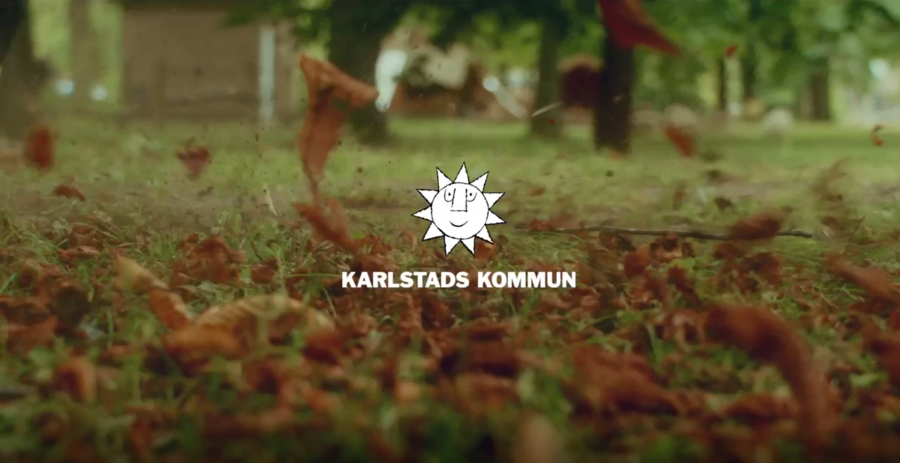Daniel Jones, lead researcher from the College of Science at Swansea University, is conducting one of the largest ever field trials to test ways of tackling Japanese knotweed, a group of invasive plants that are becoming more abundant in the UK.
Researchers from the College of Science have therefore set up a series of rigorous scientific field trials to compare different knotweed control methods. They are working in partnership with Complete Weed Control, a link which ensures that the project combines scientific and practical expertise. The research is part-funded by the European Social Fund, via the Welsh Government.
Twenty-one different Japanese knotweed control methods are being tested, including current best practice and novel control methods. The trials, which draw on almost 50 years of research, are the largest Japanese knotweed field trial ever conducted in Europe or North America.

Figure 1: Where do you start? Japanese knotweed growing along the headwaters of the River Rhymney in South Wales, crossing public and private property boundaries. Who is responsible for the control of such infestations? (© Dan Jones 2012).
My initial interest in Japanese knotweed came about as a result of undertaking my Masters degree, where I was using remote sensing to find and map invasive species. Japanese knotweed was really well suited to this as it forms large areas of unbroken canopy, meaning that it can be readily detected using aerial photographs. As the project developed, I became more and more interested in the target species, not least because of the ecological and socioeconomic impacts of knotweed, which are significant and continue to grow.
The costs of managing Japanese knotweed at the UK level are large: Williams et al. (2010) estimated that they were in the region of £170 million pounds per year. Economic costs are mainly incurred by high knotweed control costs on development sites and controlling knotweed growing adjacent to communication routes, such as roads and railway lines.
Perceived impacts upon property (e.g. knotweed roots penetrating house foundations) have also led to devaluation of housing stock and difficulties for some homeowners finding a mortgage, particularly in South Wales. Significant, but lower economic losses are also incurred in nature conservation, recreation and landscape (e.g. loss of river banks for fishing). Further, due to the dense knotweed canopy that excludes most light, few plant species are able to live within knotweed stands, reducing the number of grazing insects that form the basis of terrestrial and freshwater food webs. Consequently, knotweed locally exerts negative impacts on biodiversity through reduced habitat availability and quality, in addition to incurring significant management costs every year at the UK national level.

Figure 2: Who’s problem is it? A Japanese knotweed issue that can’t be ignored in Cardiff (© Dan Jones 2013).
Once the MSc was completed, I worked as an ecological consultant for an international engineering company for a year and knotweed was frequently flagged up as causing problems on a range of sites across the UK. This reinforced my understanding of the challenges involved in knotweed management and set me off thinking about how some of these issues could be resolved more effectively and efficiently.
Following publication of my first paper on remote sensing of knotweed, I decided to try and find PhD funding to continue my studies, focussing on knotweed control and management. What really interested me was how knotweed could be managed more effectively, reducing the cost, use of herbicides and environmental impacts of control treatments within the amenity sector.

Figure 3: How not to manage your knotweed problem: two cases in point to illustrate that covering up your Japanese knotweed wont work and will cost you more money in the long run (Southampton, left and Bristol, right) (© Dan Jones 2010, 2013).
Funding was secured for my PhD through Swansea University and it was only then that I came to fully appreciate the challenges of knotweed management. Japanese knotweed is an internationally recognised problem; however, research to determine the most effective control treatments has historically overlooked many aspects of the plant’s biology and has been small-scale, piece-meal and crucially, of short duration, resulting in the widespread adoption of control treatments that have not been tested sufficiently.
Understanding of spatial (space) and temporal (time) scales are key for management of species such as knotweed that have a deep, extensive root systems that are long-lived and robust. Consequently, I began to formulate a field experiment to test all accepted physiochemical control methods and some novel ones that I included, based on my understanding of how knotweed works. I am indebted to Dr Jonathan Newman (Centre for Ecology & Hydrology) and Mr Gethin Bowes (Caerphilly County Borough Council), who at this stage provided excellent advice on both herbicides and application methods; without this advice a number of very time-consuming and costly control methods would have been replicated unnecessarily and in hindsight, the trials would have become exponentially more difficult to conduct.
Our ability to control knotweed and adequately predict control response in the medium to long-term relies upon how well we understand the plant and physical and chemical (herbicide) treatments that we use to control it. In order to minimise the socioeconomic and biodiversity impacts of knotweed control, it was clear that I needed to gain additional physiological understanding of the plant, in addition to long-term knowledge of plant-herbicide interactions and control outcomes to assist policy makers, land managers and other stakeholder groups to deal effectively with this management challenge.
As my PhD Scholarship involved working in partnership with a commercial organisation, it was clear that establishing a field trial to experimentally test knotweed control would benefit both the partner company and I, providing the original partner company with a commercial competitive edge in knotweed control (i.e. a tangible benefit) and myself with an exciting and challenging research topic.
Spatial scale was a key element of the field-testing and perhaps the greatest initial challenge during planning the field trials. Based on previous work in the field, knotweed root extension was anywhere up to 20m from the main stand and consequently needed to be taken into account, as control treatment interference (i.e. one treatment influencing another adjacent treatment) was a realistic possibility.
My Colleague Dr Gareth Bruce was my field buddy while we scoured South Wales for suitable field trial sites - even here, finding large patches of accessible, untreated knotweed was difficult. This meant that compromises needed to be made: the plots were made to measure 15 × 15 m (225 m2), taking into account rhizome extension, while permitting trialling of as many methods as possible.
Fortunately, after much searching, Mr Sean Hathaway (City and Council of Swansea) provided two sites in Swansea, while Gareth found the ultimate field trial site near Cardiff in 2012. The initial challenge of finding the field trial sites was quickly eclipsed by actually establishing them. While the initial sites in Swansea contained 7 and 2 plots, respectively, the site near Cardiff contained 50 plots, which required access and marking with fencing posts. In total, between May 2012 and May 2013, Gareth and I created over 50 field trial plots and over 5 km of paths (cut by hand) to provide access to the plots. Needless to say, it was heavy going.

While treatments were started at the Swansea sites in 2012, due to difficulties with the original partner company they did not start near Cardiff until 2013. Fortunately, at this time I met Mr Ian Graham, Director of Complete Weed Control (CWC) Ltd. who realised the potential of what we were working on and how this may provide a benefit not only to his own business, but the industry as a whole. Ian and Alan Abel (Director, CWC) were quick to supply the necessary chemical, kit and logistical advice that was essential for me to continue with my studies and which made knapsack spraying approximately 25,000 m2 of knotweed a little less nerve-wracking! 2013 and 2014 were definitely a steep and painful learning curve, where I certainly became better acquainted with my target!

Figure 4: Taffs Well (near Cardiff) field trial site panoramas from 2012 through to 2016. Note replacement of the dominant invasive non-native species (INNS) Japanese knotweed with Himalayan balsam in most of the field trial plots (appears like grass turf from a distance in the 2015 and 2016 images), with the exception of the control and Icade® plots.
Through 2014 the fieldwork continued apace, leaving little time for writing, which as you can probably guess is a pretty important part of doing a PhD. As winter approached, the pressure built to get the PhD written up (not least from my PhD Supervisor, Prof Dan Eastwood). There was a lot to include, not only the knotweed field trials, but a smaller Winter heliotrope (Petasites fragrans) field trial and additional plant identification and physiology studies.
Following passing my PhD viva (exam) in June 2015, the busy year continued and it was at this time that I reconnected with my botany Tutor from my MSc, Mr Rhyan Law-Cooper. Rhyan and I worked non-stop through 2015, both on the field trials, PhD corrections and later making the site ready for showcasing at the 2015 Property Care Association (PCA) conference. During this time, after being approached with commercial knotweed work, we established our Swansea University spinout company, Advanced Invasives (Ai) that continues to develop in partnership with CWC.
2016 has again been exceptionally busy, this time writing up the knotweed field trials paper, in addition to maintaining the field trial sites, running a business and engaging with industry (e.g. presenting at the 2016 Amenity Forum Conference). Our paper submitted for publication is entitled ‘Optimising Physiochemical Control of Japanese Knotweed’. This presents the results of the first three years of knotweed field trials, up to 2015.

Figure 5: Comparison of Lower Swansea Woods field trial site between April 2012 and June 2016. Things have changed pretty dramatically since we started controlling Japanese knotweed in 2012 with excavation, Tordon 22K® and Glyfos ProActive®. Within 4 years of treatment, there is no longer any knotweed regrowth in these plots and the grass sward, which began to recover in the first year of treatment continues increase in density and diversity. It is interesting to note that the excavation treatment combined with Glyfos ProActive® has not been nearly as successful in controlling knotweed at the site and this is an issue that will be discussed in our Journal article which is now in press.
All control methods are compared with all others (and the control) based on the number of years after treatment. Designing the stats to do these comparisons has been very time-consuming and thanks are in order to my stats Guru Prof Mike Fowler in Swansea University! The trial that I established constitutes the largest knotweed control trial ever undertaken and is one of the largest ever conducted for control of an invasive species (Kettenring & Adams 2011). Furthermore, it is one of the longest running experiments of its kind conducted and contains the largest number of control treatments ever trialled: 24 at present (the previous best is 6!) (Kettenring & Adams 2011).
As our paper is in press, I am unable to go into the details of our results, but I can confidently report that there is no short-term ‘cure’ for Japanese knotweed, using herbicides or combinations of herbicides and physical control methods (e.g. cutting). Indeed, some physical methods that may appear quick and easy to undertake (e.g. cutting) are entirely ineffective at controlling knotweed and worse, if the material produced is disposed of improperly, this constitutes a criminal offence in the UK.
Our field trials are on going and we are now in the process of locating additional field trial sites for experiments commencing in 2017. This work will refine the control treatments that we have determined to be effective, in addition to trialling a range of additional physiochemical control methods. Now more than ever, we are getting to the interesting bit: what works, how does it work, how can we improve on this and crucially, how do we get this knowledge into best practice?
Author Dr Daniel Jones
Honorary Researcher, Swansea University | Technical Director, Advanced Invasives
Further info:
Ai website - http://www.advancedinvasives.com
CWC field trial blog - http://www.completeinvasivescontrol.co.uk/invasive...
References
Kettenring, K.M. & Adams, C.R. (2011). Lessons learned from invasive plant control experiments: a systematic review and meta-analysis. Journal of Applied Ecology 48, 970-979.
Williams, F., Eschen, R., Harris, A., Djeddour, D., Pratt, C., Shaw, R.S., Varia, S., Lamontagne-Godwin, J., Thomas, S.E. & Murphy, S.T. (2010). The Economic Cost of Invasive Non-Native Species on Great Britain. CABI, Wallingford.
Dan Jones
PhD, MSc, BSc, GCIEEM
Dan is an Honorary Researcher at Swansea University and has over ten years experience working across the ecological sector. He now specialises in the detection, mapping, control and management of Invasive Non-Native Species (INNS). Dan founded the Swansea University spinout company Advanced Invasives (Ai) out of a desire to set a new standard of INNS management; scientific, applied and truly big picture. He leads on INNS control, management and field trial services, bringing new data and perspectives on INNS management into practice.
Rhyan Law-Cooper
MSc, BSc, MCIEEM
Rhyan has thirteen years experience as a botanist and field ecologist, working in the ecological and nature conservation sectors. Rhyan has extensive experience of ecological survey techniques, GIS modelling and habitat management, including INNS. He brings an in-depth scientific knowledge and understanding of plant ecology, providing an ecological approach to INNS management and long-term restoration. Rhyan is also engaged by Swansea University to teach plant identification and ecological skills in a range of settings












